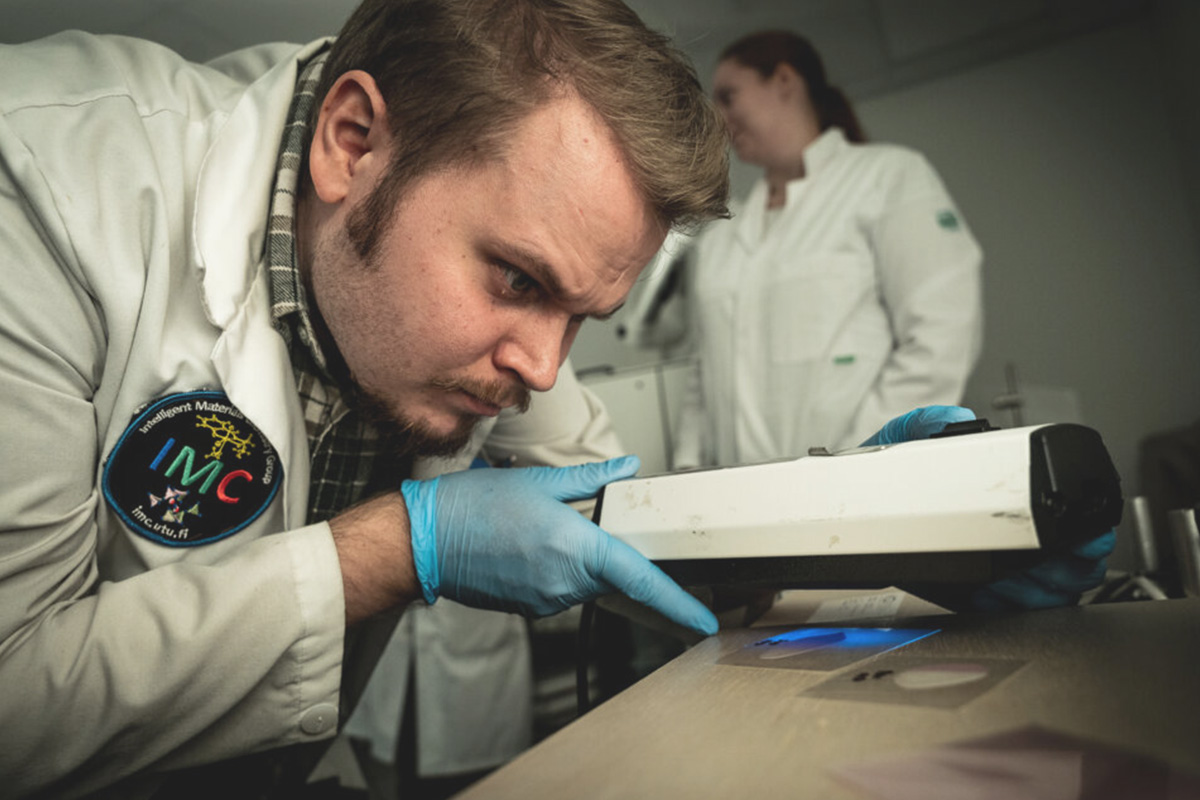Soda-Lights: producing highly luminescent sodalites for lighting using Finnish minerals
Researcher
Sami Vuori, Doctoral Researcher, University of Turku
Supervisor
Professor Mika Lastusaari, Intelligent Materials Chemistry Research Group,Department of Chemistry, University of Turku
Background of the project
The most commonly used material in common white LEDs is a yellow-emitting Y3Al5O12 doped with cerium.
(YAG:Ce), which combines with the blue emission from a semiconductor to create white light. The problem with this material is that it contains cerium and yttrium, which are rare earth elements with limited availability, and that is why non-endangered, sustainable elements are needed to be sought after in this field.
Aim: The goal of our research is to synthesize sodalite (Na8Al6Si6O24Cl2), a mineral with unique optical properties, using various Finnish mineral sources including feldspars and spodumene. According to earlier research, sodalite’s visible light emission is dominant in the orange region, but the aim of this work is to shift the wavelength to yellow in order to obtain white light and eventually replace YAG:Ce as the material in LEDs. The utilization of Finnish mineral resources will not only contribute to the development of sustainable materials but also improve the availability of sodalite for various industrial applications in the country and worldwide. The main challenges of the project lie in the unpredictable purity of the natural materials, however in many cases impurities are the key to obtain certain optical properties.

Figure 1. Photos of doped completely synthetic sodalites under white light and excited with UV. Orange/yellow and blue emissions are shown together with white emission obtained by mixing the two colors.
We will first screen possible candidate minerals using X-ray powder diffraction, X-ray fluorescence spectroscopy, then develop and tune the synthesis procedure by utilizing thermal analysis techniques to investigate the optimal synthesis temperatures. In the last step, the light emission properties are tuned by different synthetic and doping methods, and the final aim is to develop an efficient and cost-efficient process to synthesize large batches. An example of the effect of different dopant elements are shown in Figure 1. The light emitted from these materials are measured using luminescence spectroscopy to gain information about their emission and excitation wavelengths and quantum yield.

Sami Vuori is checking if a newly-made sodalite sample is luminescent
